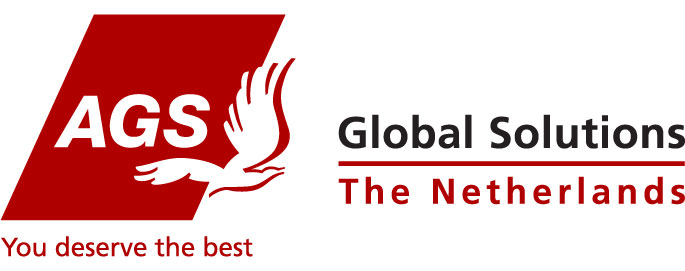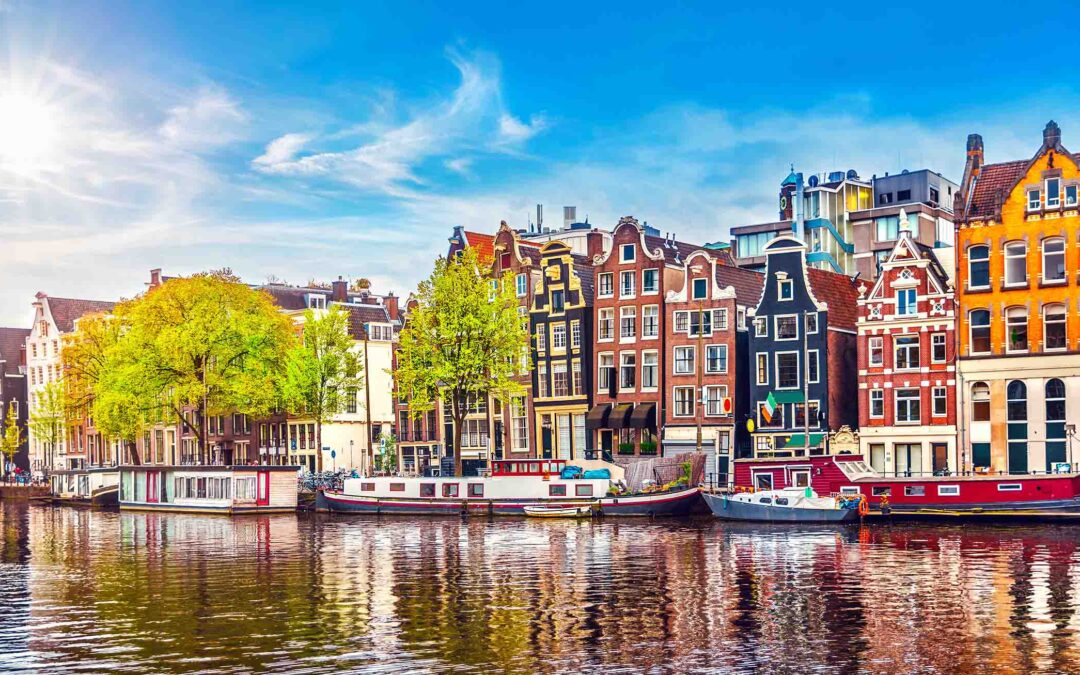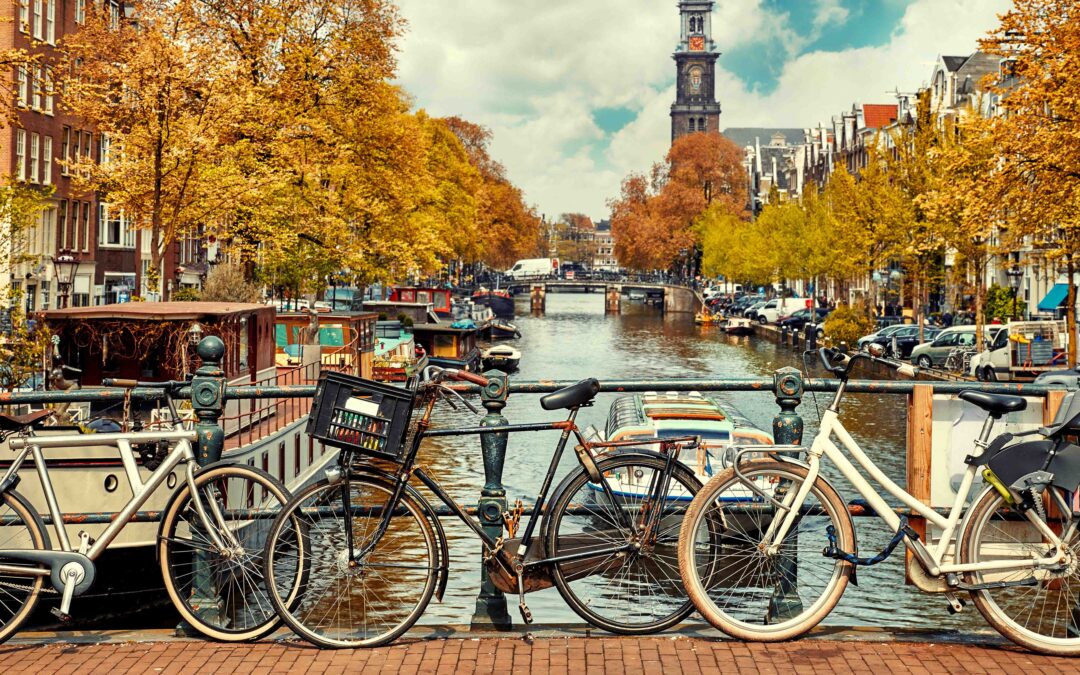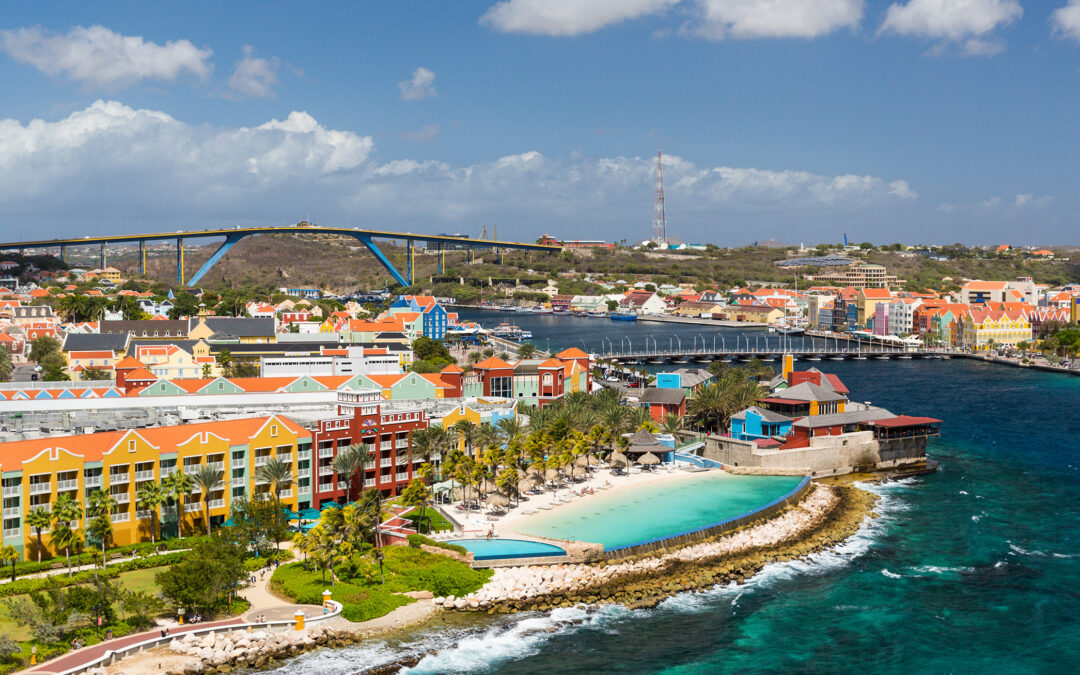Australian visa requirements
More than 66 000 Australian residents were born in the Netherlands, according to the country’s last census. To join them, your first step will be to familiarise yourself with the various visa options available. These will vary depending on whether you want to work, study or reunite with family.
If you want to work in Australia, the most common visa types are the Temporary Skill Shortage visa (subclass 482) and the Skilled Independent visa (subclass 189), both designed for individuals who possess skills that are in high demand in Australia’s labour market.
It’s worth noting that certain visas are awarded according to a points-based system. Applicants are assessed according to factors like age, English language proficiency, professional experience, and education. Accumulating sufficient points is crucial for increasing your chances of successfully obtaining a visa.
The Australian government’s official website will help you figure out the right visa for your circumstances. Remember, it’s essential to apply for your visa well in advance of your planned move date, as processing times can vary significantly depending on the complexity of your application and the specific visa category. The table below shows the eligibility criteria necessary for the various visa types and what it will cost you (June 2024):
| Visa Class | Description | Eligibility Criteria | Cost |
| Student Visa
(subclass 500) |
For individuals enrolled in registered courses in Australia, such as university degrees, vocational training, or English language courses. | Requires acceptance into a course and proof of funds for living expenses and tuition fees. Applicants must also meet health and character requirements. | AUD710.00 |
| Skilled Independent Visa/Skilled
Nominated Visa |
Designed for skilled workers and professionals who wish to live and work in Australia on a permanent or temporary basis. | Eligibility is based on factors like age, English proficiency, occupation, skills assessment, health, and character requirements. | AUD4,115.00/
AUD4,640.00 |
| Partner Visa
(subclass 820/801) |
Allows spouses, de facto partners, or fiancés of Australian citizens, permanent residents, or eligible New Zealand citizens to live in Australia. | Requires proof of genuine and ongoing relationship, and meeting health and character requirements. Applicants may apply onshore or offshore. | AUD8,850.00 |
| Dependent Child Visas | Enables eligible family members to join their Australian citizen, permanent resident, or eligible New Zealand citizen relatives in Australia. | Includes Parent Visas, Child Visas, and Remaining Relative Visas. Eligibility criteria vary based on the specific visa subclass and relationship to the sponsor. | AUD3,055.00 |
| Investor Visa | Designed for individuals who want to establish, manage, or invest in a business in Australia. | Must have previously held a provisional subclass 162 visa and a designated investment of AUD1.5 million for four years. | AUD2,810.00 |
If you’re considering moving to Australia permanently, acquiring a Permanent Residency Visa is a must. This status offers many benefits, including access to healthcare and educational services, and after four years, the eligibility to apply for Australian citizenship.
Finding work in Australia

If you’re moving to Australia for better job prospects, recognition of your credentials is often a prerequisite for your visa application. You’ll also have to take a Skilled Migration and an English language proficiency assessment. This is arranged with the Australian Government and Department of Education.
Certain professions require additional assessments. Healthcare professionals will need to go through Australian Medical Council, while Engineers should approach Engineers Australia. Researching these requirements early is important for your success in obtaining entry into Australia.
Expats can find work in Australia through online job portals like Indeed and SEEK – Australia’s top employment marketplace, recruitment agencies, and networking sites like LinkedIn.
Cities like Sydney and Melbourne with thriving economies and diverse industries offer the most job opportunities for skilled professionals. Major industries seeking workers include:
- Healthcare: Demand for healthcare professionals such as nurses, doctors, and allied health workers is high across all regions.
- Information Technology: With the growing digital economy, IT professionals are sought after in major cities like Sydney, Melbourne, and Brisbane.
- Construction and Engineering: Infrastructure projects and urban development drive demand for engineers, architects, and construction workers.
- Hospitality and Tourism: With its thriving tourism industry, positions in hotels, restaurants, and tour companies are readily available, particularly in coastal regions.
- Agriculture: Rural areas require workers for farming, livestock management, and agricultural research.
- Education: Growing demand for teachers specialising in English and other foreign languages, Mathematics, Technology, and Science, as well as early childhood and special education teachers.
Australian workplace culture values diversity, work-life balance, and open communication. Most workplaces encourage being on a first-name basis with all levels of staff. Teamwork and collaboration are highly regarded, along with initiative and the ability to work independently.
Australians also place a high value on punctuality, honesty, and directness in communication. Employers support flexible working arrangements, such as working from home and flexible hours, to enhance productivity and maintain a positive work environment.
Australian healthcare system
Australia’s national healthcare system, Medicare, is available to all Australian citizens and permanent residents for free or at subsidised rates. However, as a non-resident and non-citizen of Australia – at least for the first four years – you’ll be considered a private patient and will need to pay for your care at the time of treatment (in both public and private healthcare facilities).
For this reason, the Australian government strongly encourages you to get private insurance – even if it isn’t a condition of your visa – to ensure you’re fully covered for any unplanned medical and or hospital care you might need while in Australia.
Once you’re registered for Medicare you’ll be covered for essential medical treatment, doctor’s visits, and hospital care. You’ll also benefit from the Pharmaceutical Benefits Scheme (PBS), which offers prescription medicines at subsidised rates.
Even so, you might still want private health insurance to be able to choose your own doctor and get coverage for secondary services like dentistry, optometry and physiotherapy. Private insurance also provides options for private hospital rooms and shorter waiting times for elective surgeries.
To incentivise private health insurance, the Australian government offers the private health insurance rebate. The amount of rebate you receive is determined by your annual income. Unfortunately, it doesn’t to exempt you from out-of-pocket costs for co-payments, excess fees, and non-covered services.
Cost of living in Australia
The cost of living in Australia is relatively high compared to many other countries, influenced by various factors including location, lifestyle choices, and personal circumstances. To give you a better idea of what to expect, we’ve included information from Numbeo comparing the cost of living in two most expensive cities in the Netherlands and Australia, Amsterdam and Sydney.
| Accommodation | Amsterdam | Sydney |
| One-bedroom Apartment in the City Centre | €1,963.37 (A$3,161.60) |
€2,031.26 (A$3,270.93) |
| One-bedroom Apartment Outside of the Centre | €1,617.95
(A$2,605.37) |
€1,416.79
(A$2,281.44) |
| Three-bedroom Apartment in the City Centre | €3,377.93
(A$5,439.44) |
€4,006.07
(A$6,450.94) |
| Three-bedroom Apartment Outside of Centre | €2,539.19
(A$4,088.83) |
€2,339.21
(A$3,766.81) |
| Markets | Amsterdam | Sydney |
| Milk (1 litre) | €1.22
(A$1.96) |
€1.47
(A$2.37) |
| Dozen Eggs | €4.14
(A$6.66) |
€3.78
(A$6.09) |
| Chicken Fillets (1kg) | €12.12
(A$19.51) |
€7.92
(A$12.75) |
| Bottle of Wine (Mid-Range) | €7.00
(A$11.27) |
€12.42
(A$20.00) |
| Restaurants | Amsterdam | Sydney |
| Cappuccino | €3.99
(A$6.42) |
€3.12
(A$5.03) |
| Coca-Cola (330ml) | €3.18
(A$5.13) |
€2.37
(A$3.81) |
| Meal for 2 at a mid-range restaurant (3-course) | €87.62
(A$141.10) |
€74.52
(A$120.00) |
| Local Draught (500ml) | €6.50
(A$10.47) |
€6.41
(A$10.32) |
| Utilities and Transportation | Amsterdam | Sydney |
| Basic Utilities (Electricity, Heating, Cooling, Water, Garbage) | €261.86 (A$421.68) |
€187.42
(A$301.80) |
| Mobile Phone Monthly Plan (Calls and 10GB Data) | €21.08
(A$33.95) |
€24.66
(A$39.71) |
| Fuel (1 litre) | €2.00
(A$3.23) |
€1.26
(A$2.03) |
| Monthly Transportation Pass | €81.55
(A$131.32) |
€135.00
(A$217.39) |
| Childcare | Amsterdam | Sydney |
| International Primary School for 1 child (Yearly) | €11,332.38
(A$18,248.43) |
€16,976.26 (A$27,336.72) |
Australia’s high quality of life comes with a high price tag for some, so it’s important to plan and budget if you’re considering moving.
Australian education system
Australian offers a national curriculum for all primary and secondary schools. The curriculum for public and private schooling focuses on literacy, numeracy, science, humanities, and the arts.
Australia’s education system is structured to provide diverse and inclusive educational opportunities, striving to equip all students with the skills and knowledge needed to succeed in a global environment.
Structure:
- Early Childhood Education: Not mandatory and includes preschool (kinder) for children aged 3 to 5 years.
- Primary Education: Usually starts at age 5 or 6 and continues for 7 or 8 years (depending on the state or territory).
- Secondary Education: Follows primary education and lasts for 4 to 6 years. It ends with students receiving a Higher School Certificate (HSC), the equivalent of a VWO diploma in the Netherlands.
- Tertiary Education: Australia is home to world-renowned universities offering bachelor’s, master’s, and doctoral degrees. They attract many international students, particularly from Asian regions, due to the high quality of education and the use of English as the medium of instruction. The country’s university system is known for research and innovation, particularly in science, medicine, and technology.
Public schools are free, though voluntary contributions might be requested. These schools base admissions on a catchment area, so where you live will determine which school your child can attend. Private schools range from AUD 5,000 to AUD 30,000 per year.
Public transport in Australia (and driving)

Public transportation in Australia varies widely across its cities and regions, reflecting the country’s vast geography and dispersed population. Each state uses a unique card for payment and access to public transport.
- Urban Public Transport: Major cities have well-developed public transport networks that include buses, trains, and trams.
- Sydney’s Opal Card: includes buses, trains, ferries, and a light rail line.
- Melbourne’s myki: Renowned for its extensive tram network, the largest in the world, Melbourne also has a train and bus system. The city’s trams are a cultural icon and a major tourist attraction.
- Brisbane Go Card: Offers access to buses, ferries (known as CityCats), and the rail network that extends to surrounding regions.
- Perth’s SmartRider: Free bus services within the city centre and a network of trains and buses serving wider metropolitan areas.
- Adelaide’s metroCARD: Features trams, trains, and buses, including a free tram service within the city centre.
- Regional Transport: Long-distance trains and coach services operate between states and key regional hubs.
- Ferries: Essential in cities like Sydney and Brisbane, where they serve as both a practical mode of transport and a way to enjoy scenic views.
While Australia’s public transport systems are well-developed in metropolitan areas, reliance on cars is still high, especially in regional and rural areas due to less frequent services and larger distances.
Most states and territories allow foreign nationals to continue driving on their foreign driving license indefinitely, as long as it is valid. And as a Dutch citizen, you’ll be able to exchange your Dutch driver’s license for an Australian license without taking another theory or driving test. Just don’t forget – Australians drive on the left!
More about Australia
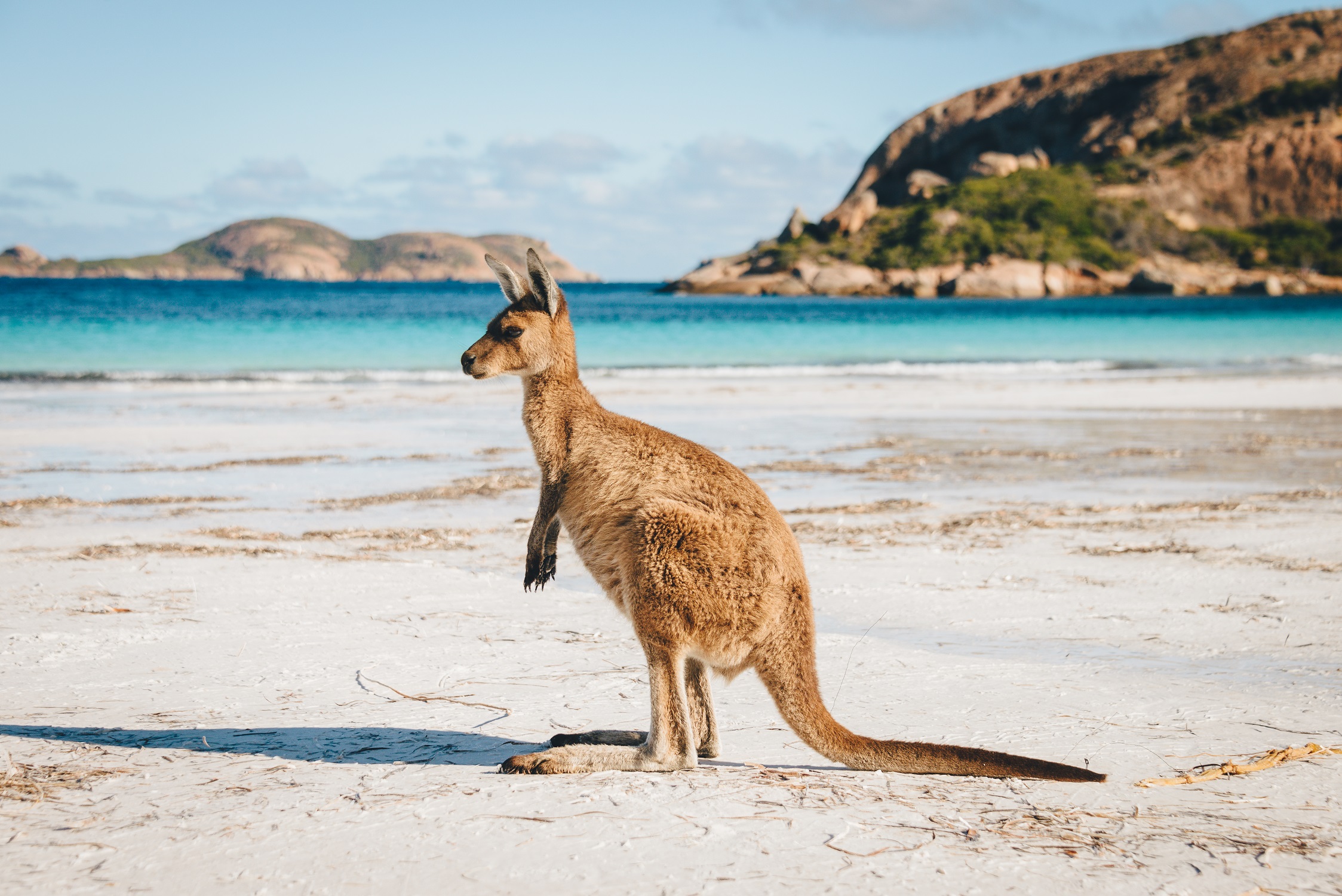
Climate:
Australia’s climate varies greatly from the Netherlands, with diverse weather patterns across the continent. While the Netherlands experiences a temperate maritime climate with mild summers and cool winters, Australia’s climate ranges from tropical in the north to temperate in the south. Coastal areas enjoy warm summers and mild winters, while inland regions experience hotter temperatures and arid conditions.
Australian cuisine:
Australia’s multicultural population has contributed to a rich and diverse food culture, with influences from around the world. Traditional Aussie dishes include meat pies, their famous Vegemite on toast, and lamingtons, while multicultural cuisines such as Thai, Indian, Italian, and Chinese are widely enjoyed. Native ingredients like kangaroo and emu are also incorporated into modern Australian cuisine, creating unique and interesting dishes.
Cultural Integration
Adjusting to a new culture involves more than just adapting to the climate and cuisine—it requires learning cultural norms, social etiquette and work-life balance. The Dutch are famous for their direct and straightforward manner, which can sometimes come off as blunt. In contrast, Australians may be more subdued in their critiques and often use humour or indirect methods to convey their points to avoid confrontation.
Both cultures value work-life balance but approach it differently. The Dutch strictly separate work from personal life, emphasising family time and regular holidays. Australians value leisure time but often blend work and personal life more seamlessly.
Australians are known for their unique slang and colloquialisms, such as “mate” (friend), “arvo” (afternoon), and “barbie” (barbecue). Embracing expressions and customs will help you feel more at home and connect with locals on a deeper level.
Moving from the Netherlands to Australia is a significant step that requires careful planning and preparation. By using this as your guide, you and your family can make a smooth transition and embark on a rewarding new chapter Down Under.
Contact AGS Movers Netherlands for a customised moving experience that will guide you through each step of your relocation to Australia.
